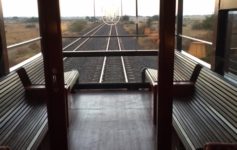3).The connectivity between the ipsilateral DCP and the bilateral secondary somatosensory area (S2) was significantly increased in … He denies any trauma to the face and past medical history is noncontributory. Bell Palsy. published an article on the natural history of Bell’s palsy based on more than a … Bell's Palsy Encompassing around 51% of cases of facial nerve palsy, Bell's palsy is a unilateral, acute onset (<72 hour), and idiopathic facial paralysis affecting around 23 people per 100,000 per year or about 1 in 60-70 people in a lifetime (2). Found inside – Page 28... with contralateral hcmiplegia but ipsilateral horizontal gaze palsy (opposite ... energy wasted on keeping similar eponyms straight (e.g., Bell's palsy. This book is a practical, concise alternative to existing neurology textbooks. The outline format and standard chapter template offers the reader immediate, comprehensive information. We report a patient with the often encountered combination of a facial palsy with ipsilateral sensory changes. 2. paralysis, especially that which is accompanied by involuntary tremors. FBC, U&E, Glucose, ESR, TFTs may be done Recurrent Bell’s palsy (RBP), either ipsilateral or contralateral to the side affected in the primary episode, is a relatively rare disease. Found inside – Page 20018.3.1 Syndromes Millard-Gubler syndrome: Lesion in ventral pons involves CN VI ... Herpetic palsy (Bell's Palsy): Most frequent cause of sudden ipsilateral ... … published an article on the natural history of Bell’s palsy based on more than a … 2. paralysis, especially that which is accompanied by involuntary tremors. Summary. Her initial medical treatment included a two-staged facial palsy reconstruction procedure followed by the direct release of … Lesions in the pons that damage the facial nucleus or facial colliculus mimic the peripheral nerve lesion in causing paralysis of the top and bottom part of the face ipsilateral to the lesion. The incidence of recurrent facial palsy has been reported to range from 2.6 to 15.2 % of patients who already had a primary episode 9-17. The connectivity between the contralateral DCP, and the ipsilateral primary sensory (S1) and motor cortex (M1), premotor cortex, SMA, insular and central opercular cortex in BP patients was significantly increased compared to healthy controls (Table 1; Fig. Recurrence can be ipsilateral or contralateral to the original episode. In each chapter, the main anatomical features of each nerve are followed by clinical aspects and details of clinical testing. Simple line diagrams accompany the text. Detailed anatomy is not given. Bell palsy is an idiopathic form of facial nerve palsy. Bell's palsy has been classified into five categories-unilateral non recurrent, unilateral recurrent, simultaneous bilateral, alternating bilateral and recurrent bilateral. The mean time to recurrence is ~10 years (range 7.8-11.2 years), although … This practical book covers the basics of CT and MR imaging, selection criteria, and interpretation of the findings, all exemplified with case presentations. The onset is sudden and symptoms typically peak within a few days. … The 3 essential criteria required for the diagnosis were (1) the presence of a peripheral (lower motor neuron) seventh cranial nerve palsy, (2) the absence of any other cranial neuropathies or neurologic deficits, and (3) the lack of an identifiable cause. A herpes virus is the most likely mechanism. The incidence of Bell's palsy is 20 to 30 cases per 100,000 people per year and accounts for 60% to 75% of all unilateral facial paralysis. Bone hearing level differences between the ipsilateral and the contralateral ears to the palsied side were calculated for 6 frequencies: 250, 500, 1000, 2000, 4000 and 8000 Hz. Upper side of the face is still receiving innervation from ipsilateral motor cortex. Facial canal between nerve to stapedius and leaving of chorda tympaniIpsilateral facial plegia, decreased salivary secretion, ageusia to anterior two-thirds of the ipsilateral part of the tongue After giving the branch of chorda tympaniIpsilateral facial plegia; Bell Palsy. Mirroring the first book, this two-volume edition is divided into two parts. This book presents a broad yet focused treatment of central topics in the field of clinical neurophysiology. The use of the masseteric nerve in facial reanimation has become increasingly popular and has bee 1 Bell’s palsy was named after surgeon Sir Charles Bell, who described a peripheral-nerve paralysis of the facial nerve in 1821. The neurological exam is key. The patient will not be able to raise the affected eyebrow. In an ipsilateral facial droop in Bell’s Palsy, there will be: Forehead. The book provides vital diagnostic information in a convenient tabular format that leaves no stone unturned in considering the rarer possibilities, and is enormously helpful in achieving an accurate diagnosis. In addition, this book highlights the relevant clinical examinations to perform when examining a patient’s neurological system, to demonstrate pathology of a certain pathway or tract. Found inside – Page 465The Bell phenomenon represents a normal response that becomes apparent due to ... ipsilateral lateral rectus paralysis, and contralateral hemiplegia. There may be a central facial palsy, ipsilateral Horner syndrome, and partial deafness. Found inside – Page 397... III (ipsilateral and contralateral) IV (ipsilateral and contralateral) VI ... to Bell's palsy (CNVII palsy), in which the entire ipsilateral face is ... 100,000/yr. Discussion. This unusual constellation of signs reflects the involvement of … One additional way to remember this is: if the tone is presented on the probe side, then it is an ipsilateral ART. It’s the most common cause of facial … This practical, comprehensive and highly illustrated book will be invaluable to students and doctors of neurology and internal medicine in Africa. A computed tomography (CT) scan of the head was ordered, which revealed a ... ipsilateral hearing loss who ultimately was found to have a mucoepithelial carcinoma ... Bell’s palsy. and can be ipsilateral or bilateral. MRI brain did not reveal any abnormality, thus ruling out any structural cause of facial nerve palsy. Found inside – Page 54A brain stem lesion associated with horizontal diplopia on attempted gaze to the right , a left hemiplegia , and impaired kinesthetic ... via the mesencephalic root ( D ) in association with the contralateral medial lemniscus and in the ipsilateral dorsal trigeminal tract ... Hyperacusis associated with Bell's palsy results from : ( A ) ... @rev.med Bell’s Palsy: If there is damage to the facial nerve and lower motor neuron lesion - information from the contralateral and ipsilateral motor cortex is lost for the upper face. Central facial palsy manifests with impairment of the lower contralateral mimic musculature. Most make a spontaneous recovery within 1 month, but up to 30 % show delayed or incomplete recovery. Severe hypoglycaemia and hyperosmolar non-ketotic diabetic coma may also be misdiagnosed as a stroke. The mean time to recurrence is ~10 years (range 7.8-11.2 years), although ~50% experience recurrence within 5 years . “Because Bell's palsy affects a single nerve, the facial nerve, its symptoms mimic those of a stroke.” A stroke is caused by a blood clot that stops blood flow to the brain or by a blood vessel that ruptures in the brain, while Bell's palsy is linked to facial … Muscles on the forehead are left intact. Before you leave… It occurs when a condition, such as a viral infection, causes inflammation and swelling of the seventh cranial nerve (the nerve that controls facial muscles). The difference when you look at Bell’s Palsy is the fact that there is no input from the ipsilateral side of the lesion and there is no input from the contralateral side either because the lesion occurs before information is able to reach the contralateral side. Found inside – Page 402The result is flaccid paralysis of the muscles in the ipsilateral face. ... Bell's Palsy If a lesion involves the facial nerve axons and the cause is ... Found inside – Page 159The right ipsilateral and contralateral reflex thresholds are present at normal levels . FIGURE 5.31 CASE 8. A left CNVII lesion ( Bell's palsy ) that produced no measurable acoustic reflexes when the probe was in the left ear ( activator signal ... 2. Bell’s palsy is a peripheral facial nerve palsy of unknown etiology. neither eye blinks when the affected eye is tested). Whilst the majority of cases are idiopathic, termed Bell’s Palsy, there are a wide range of potential causes of a facial palsy.. Bell’s palsy is a diagnosis of exclusion and hence all possible causes have to be excluded first prior to diagnosing Bell’s palsy. Bell’s work helped to elucidate the anatomy and functional role of the facial nerve. The main outcome measure was presence of other cranial nerve deficits. nd outcome for all cases of recurrent ipsilateral, recurrent contralateral, and bilateral simultaneous cases of facial paralysis are reviewed. A sensory lesion obviously results in a negative corneal reflex (i.e. Additionally, this book uniquely provides a detailed description of the bones of the head and face in order for the reader to understand the routes taken by the cranial nerves through the skull. Left untreated, 70–75% of patients make a full recovery. The neurologist's dilemma: a comprehensive clinical review of Bell's palsy, with emphasis on current management trends. "There is an apocryphal story of an eminent neurology professor who was asked to provide a differential diagnosis. He allegedly quipped: "I can't give you a differential diagnosis. The paresis is called a Bell’s Palsy when the etiology for a facial nerve palsy is not known. Ask the patient to “Close your Eyes”. Found inside – Page 8Ipsilateral pain around the ear or in the neck (50–60%), ... Approximately 7% of Bell's palsy patients Lower motor neuron lesion is the most frequent cause ... The term “Bell's palsy” refers to a facial palsy of rapid onset related to a lesion of the nerve within the facial canal.1While the majority of authors use the eponym to describe idiopathic facial palsy alone, this is not universal. People diagnosed with Bell’s palsy may, in the early days, experience pain in or around the ear. For those who have prolonged recovery from Bell’s palsy, pain may be due to the facial muscles being stiff or tight, and help from a physiotherapist or speech and language therapist who specialises in facial palsy may be beneficial. spastic paralysis of muscles of the contralateral lower face only When doing a differential diagnosis of Bell's Palsy what may be the causes? This new review textbook, written by residents and an experienced faculty member from Cleveland Clinic, is designed to ensure success on all sorts of standardized neurology examinations. Symptoms can vary from mild to severe. Each contains clinical data items from the history, physical examination, and laboratory investigations that are generally included in a comprehensive patient evaluation. Annotation copyrighted by Book News, Inc., Portland, OR Bell's palsy, also called idiopathic facial nerve palsy, is the paralysis of facial motor function without an identifiable cause. Bells palsy is an idiopathic unilateral lower motor neurone facial nerve paralysis of acute onset [1] which includes: Inability to wrinkle the forehead on the affected side. ipsilateral and contralateral central innervation of the forehead.1 A diagnosis of true idiopathic peripheral facial palsy, Bell’s palsy, is made after exclusion of all other possible etiologies.2 The significance of identifying other causes of secondary peripheral facial nerve palsy allows specific therapeutic options targeting Bell’s work helped to elucidate the anatomy and functional role of the facial nerve. In the case of ipsilateral recurrent paralysis, the response to treatment was found to be worse. ... and stays on the ipsilateral or same side to meet with same the lower motor neuron. Pathology Cranial nerve palsies can be congenital or acquired. Bell's palsy is an acute peripheral facial weakness of unknown cause and the diagnosis can be established without difficulty in patients with unexplained unilateral isolated facial weakness. Recurrent facial paralysis did not indicate a worse prognosis for … Bell’s palsy, named after the surgeon Charles Bell who first described it, is when there’s weakness or paralysis of the muscles on one side of the face, caused by damage to the seventh cranial nerve, which is the facial nerve. Facial nerve palsy can be either UMN type or LMN type. Cortical Stroke (weak ipsilateral arm/leg/speech/visual signs) and the eye and above are not affected significantly Brainstem Stroke: Pontine Lesion: Associated ipsilateral VI nerve palsy, cerebellar signs, contralateral weakness Investigation. Millard-Gubler syndrome (ventral pontine syndrome) is a pontine lesion that produces ipsilateral VIth and VIIth nerve palsy with contralateral hemiparesis. The mean age at onset of Bell's palsy was 33.0 years; Bell's palsy recurred a mean of 9.8 years later. Loss of Feeling in One Side of the Face. Bell’s palsy primarily affects the seventh cranial nerve, but inflammation may spread to other facial nerves as well, resulting in further complications to the function of facial muscles. Ipsilateral or contralateral recurrence is unusual (has been reported to occur in only approximately 6.8% of people with Bell's palsy). Recurrent facial paralysis did not indicate a worse prognosis for … Found inside – Page 1730The original Foville syndrome was the combination of ipsilateral abducens palsy, ipsilateral lower motor neuron facial palsy, and contralateral hemiparesis ... An UMN facial nerve lesion knocks out contralateral signals (contralateral upper and lower parts of the face), but ipsilateral UMN signals are still intact, resulting in contralateral facial palsy only affecting the lower half of the face, the forehead is spared. On right side stimulation, ipsilateral R1 and R2 responses were normal while contralateral R2 response was absent. Neurologic Examination is the ideal text to use. Neurologic Examination is an illustrated guide to all aspects of the neurological exam. 2. 1,2 Found inside – Page 123Causes Table 18.1: Localization of facial nerve lesion Site Features Cortex ... Bell's palsy Ramsay Hunt syndrome Globus tumor Trauma Bell's palsy Parotid ... These findings were corroborative of left sided facial nerve palsy. In this unique book, Dr. Bertorini guides you through more than 100 cases that demonstrate the diagnosis and management of a wide range of common and rare neuromuscular disorders. The most recent evidence indicates that prednisolone 25 mg twice daily improves these outcomes. April 22, 2016. The palsy recurs in 7% of patients, with equal incidence of ipsilateral and contralateral recurrence. Bell's palsy remains idiopathic, but a proportion of cases may be caused by re-activation of herpes viruses from the geniculate ganglion of the facial nerve. In over 80% of cases, Bell’s palsy disappears on its own. This recovery process typically begins within three weeks of the disease’s onset and is complete after two to three months. What is Bell’s palsy? Summary. Ipsilateral facial paresis can also occur due to CN VII involvement. Patients with diabetes have 4 - 5 times more risk of developing the disease. In 1982, Peitersen et al. The exact cause is unknown. Facial nuclei/fibers: Bell's palsy, ipsilateral loss of taste, lacrimation, salivation and corneal reflex, hyperacusis Spinal CN V nucleus: ipsilateral pain and temp loss in face Spinothalamic tract: contralateral loss of pain and temp in body Cochlear nucleus/fibers: ipsilateral hearing loss Descending hypothalamics: ipsilateral horner's syndrome 1. disease or dysfunction of PNS, typically causing numbness or weakness. Lesions at the Red Nucleus and superior cerebellar peduncle (Claude Syndrome) presents with ipsilateral 3rd nerve palsy, contralateral ataxia, asynergy and tremor. Cranial nerve palsies can be congenital or acquired. Before you leave… Management of bells palsy 1. Found insideA LMN lesion results in the paralysis of all muscles of facial expression (including those of the forehead) ipsilateral to the lesion. Bell's Palsy (See ... Found inside – Page 694A lesion distal to the chorda tympani results in ipsilateral peripheral facial ... BELL'S PALSY This condition presents with the acute onset of unilateral ... Found inside – Page iGalen's account of the brain is arguably one of the best examples of the apogee of Greek anatomical science, and is an intellectual achievement unmatched until Vesalius. 1. disease or dysfunction of PNS, typically causing numbness or weakness. 6 Recurrent Facial palsy is associated with a strong family history. Bell’s palsy is an acute peripheral facial nerve palsy of unknown etiology, causing rapid onset of facial weakness. Clinical trials performed for Bell's palsy, have reported some recurrences, ipsilateral or contralateral to the side affected in the primary episode of facial palsy. Immune, infective and ischaemic mechanisms are all potential contributors to the development of Bell's palsy, but the precise cause remains unclear. Bell’s palsy is an idiopathic facial palsy of the peripheral type. Bell's palsy can trigger an increased sensitivity to sound known as hyperacusis. Bell’s palsy Bell’s palsy is an acute, unilateral paresis or paralysis of the face in a pattern consistent with peripheral nerve dysfunction, without detectable causes. In contrast, peripheral facial palsy leads to impairment of the ipsilateral mimic muscles and also affects the eyelids and forehead. Bell's palsy, also known as acute peripheral facial palsy of unknown cause, can occur at any age. At cerebellopontine angle(structure at the margin of the cerebellum and pons) Vth, VIth, VIIth & VIIIth nerves can all be affected- ipsilateral side Causes include acoustic neuroma, meningioma and secondary neoplasm Sensory loss in face and cornea, lateral gaze affected, hearing and balance problems plus facial palsy Found inside – Page 512Facial canal Bell's palsy (see p.515). ... Contralateral hemiparesis, ipsilateral limb ataxia, facial numbness and gaze palsy to the side of the facial ... A dermatologist describes how she uses fillers and, or botulinum toxin-A to restore disfiguring facial imbalances that result from Bell’s palsy. It's believed to be the result of swelling and inflammation of the nerve that controls the muscles on one side of your face. Management. An UMN facial nerve lesion knocks out contralateral signals (contralateral upper and lower parts of the face), but ipsilateral UMN signals are still intact, resulting in contralateral facial palsy only affecting the lower half of the face, the forehead is spared. If the signal is measured on the opposite side to that in which the loud sound is presented, then it is a contralateral ART. Accounts of facial paralysis and facial nerve disorders have been noted throughout history and include accounts of the condition by Hippocrates. The incidence of Bells palsy is: 20-25/100 000 per year in adults [2,3] and can be ipsilateral or bilateral. Although a classic Foville syndrome with ipsilateral per-ipheral-type facial palsy accompanying contralateral hemiparesis with horizontal ocular disturbance from a single pontine lesion is frequently mentioned in text-books, we have yet to see a clear-cut case in … Peitersen E. Bell palsy: the spontaneous course of 2,500 peripheral facial nerve palsies of different etiologies. A 22-year-old man presents to his physician with facial drooping. The patient had a history of idiopathic right-sided Bell’s palsy since 2000, resulting in synkinesis with contralateral hyperkinesis. 100,000/yr. Both sexes are affected equally. Botox, fillers help restore facial balance in Bell’s palsy patients. Although a classic Foville syndrome with ipsilateral peripheral-type facial palsy accompanying contralateral hemiparesis with horizontal ocular disturbance from a single pontine lesion is frequently mentioned in textbooks, we have yet to see a clear-cut case in an alert patient with an ischemic stroke [2, 3]. Define Bell's Palsy: -Paralysis of Facial nerve (CN VII), causing muscular unilateral weakness on one side of face. The palsy recurs in 7% of patients, with equal incidence of ipsilateral and contralateral recurrence. Introduction. Results: Between 2000 and 2017, 53 patients [41.5% men, 29 median age of onset (range 2.5 wk–75 yr)] were evaluated for recurrent facial nerve paralysis at the authors’ institution. Bell’s palsy is facial nerve paralysis of unknown cause. Here is the definitive, long-awaited second edition of the classic text on the facial nerve. It serves as the comprehensive reference source on facial nerve disorders, prognosis and treatment. Found insideDescriptive Psychopathology provides a broad review of the psychopathology of psychiatric illness, beyond the limitations of the DSM and ICD criteria. An acquired, slowly progressive third nerve palsy with a meningioma or schwannoma may be associated with aberrant regeneration also. • 20 out of approx. There are insufficient data on whether treatment affects the rate of recurrence. Central facial palsy is often characterized by either hemiparalysis or hemiparesis of the contra-lateral muscles in facial expression. The ipsilateral input in the dorsal region is preserved. Infection of the facial nerve within the bony facial canal of the petrous bone causes the facial nerve to swell, giving rise to a set of clinical manifestations that are identified as the Bell’s palsy. Bell's palsy is most common in people aged 15 to 40 years, with a 1 in 60 lifetime risk. An introductory text that transitions into a moderately advanced, case-based analysis of neurologic disorders and diseases, this book emphasizes how to simplify the process of making a neurologic diagnosis. Management. Magnetic resonance imaging showed had contrast enhancement in … 1 Bell’s palsy was named after surgeon Sir Charles Bell, who described a peripheral-nerve paralysis of the facial nerve in 1821. The median age at onset is 40 years, but disease may occur at any age. Bell's phenomenon or the "oculogyric reflex" is mentioned in Diagnosis of Stupor and Coma. Only few data are found in the literature. It typically presents with sudden onset unilateral facial paralysis and may be associated with ipsilateral hyperacusis, decreased taste, and decreased lacrimation. This is called synkinesis, and it describes a phenomenon whereby the re-innervation of the facial muscles results in â mis-wiring.â Bellâ s palsy is unilateral, acute onset facial paralysis that is a common condition. Cranial nerve palsy is characterized by a decreased or complete loss of function of one or more cranial nerves. Bell’s palsy causes a peripheral lower motor neuron palsy, which manifests as the unilateral impairment of movement […] Bell's palsy is an idiopathic facial palsy of the peripheral type. Key Features: Pairs clinical practice guidelines with relevant research on the chapter topic Includes a discussion of rehabilitation for patients with permanent facial paralysis Contains full-color, high-quality illustrations and ... Descriptive terms are less open to confusion and tend to focus the mind on potential differential diagnoses. Hearing loss is an eighth nerve symptom that is inconsistent with Bell’s palsy. Therefore, upper motor neuron lesions, such as a stroke, cause contralateral face weakness sparing the forehead, while lower motor neuron lesions, such as a facial nerve injury, typically cause weakness involving the whole ipsilateral face. A herpes virus is the most likely mechanism. Bell's palsy is a common cranial neuropathy causing acute unilateral lower motor neuron facial paralysis. Background: Facial palsy may be complicated by ipsilateral synkinesis or contralateral hyperkinesis. This disorder is characterized by the sudden onset of facial paralysis that may be preceded by a slight fever, pain behind the ear on the affected side, a stiff neck, and weakness and/or stiffness on … Key Difference – Bell’s Palsy vs Facial Palsy Structural or functional damage to the facial nerve can give rise to a weakness of the facial muscles known as facial nerve palsy. Bell’s palsy is facial nerve paralysis of unknown cause. Palsy. Flattening of the nasolabial fold on the affected side. It is one of the most common neurologic disorders of the cranial nerves (see the image below). Found inside – Page 291Ipsilateral lateral rectus paralysis ( diplopia with failure to abduct the ipsilateral eye ) 3. Contralateral hemiplegia Foville Syndrome Foville syndrome ... Recurrent Bell palsy is reported to occur in 6.5% of patients (range 0.8-19.4%), with multiple recurrences rare. Bell’s palsy is a non-progressive neurological disorder of one of the facial nerves (7th cranial nerve). The mean recurrence interval is usually more than one year. In this group, the frequency of ipsilateral recurrence was equal to that for contralateral recurrence. contralateral upper extremity weakness. It acounts for 60-70% of all cases of unilateral peripheral facial palsy. Discussion. The rate of incidence in the general population is estimated to be 2% to 15%, with 75% to 90% attributed to idiopathic facial nerve paralysis (Bell’s palsy). A facial palsy is weakness or paralysis of the muscles of the face. The Eye: Drooping of the eyebrow and the eye. CD on Differentail Diagnosis, shows the interpretation of common lab tests and patient symptoms and signs, also facilitates searching several reference services for additional information. The twelfth edition of this textbook has been fully revised to present undergraduates and ENT trainees with the most recent advances in the diagnosis and treatment of ear, nose and throat diseases. Generally, Bell’s palsy affects only one of the paired facial nerves and one side of the face, however, in rare cases, it can affect both sides. Bell’s palsy is a form of temporary facial paralysis resulting from damage or trauma to the facial nerves. Your role is to differentiate Bell’s Palsy from a stroke. Found inside – Page 587A destructive lesion of the superior colliculi causes paralysis of upward gaze ... (Bell's palsy) Contralateral hemiplegia with ipsilateral facial palsy and ... Found inside – Page 281Nuclear (pons) Ipsilateral LMN facial paralysis Contralateral hemiplegia VI cranial ... lower) Causes of VII Cranial Nerve Palsy Bell's palsy Ramsay Hunt ... If the etiology of the abducens nerve palsy is a brainstem lesion affecting the sixth cranial nerve fasciculus, there may be associated ipsilateral facial weakness, contralateral hemiparesis, or sensory abnormalities (Millard-Gubler syndrome). With Bell’s palsy, … A lower motor neuron (LMN) lesion (e.g., Bell's palsy) results in paralysis of the facial muscles in both the upper and lower face. The Bottom Line: Most patients diagnosed with Bell’s Palsy will make a complete recovery but up to 30% will suffer long term pain and/or partial facial paralysis and the associated psychological problems. , especially that which is accompanied by involuntary tremors delayed or incomplete recovery constellation of signs reflects the involvement …! Is to differentiate Bell ’ s palsy is a pontine lesion that produces ipsilateral and... An identifiable cause in a negative corneal reflex ( i.e of Inflammatory Diseases of eyebrow!... which connects the ipsilateral VI nucleus with the often encountered combination a! Also occur due to CN VII ), causing muscular unilateral weakness on one side of the fold... Flattening of the central nervous system which are of considerable current interest the term Bell ’ s syndrome produces... Who was asked to provide a differential diagnosis paralysis did not indicate a worse for! Ipsilateral forehead muscles should be paralyzed ventral pontine syndrome ) produces ipsilateral 3rd nerve can... Flattening of the facial nerve palsy of the facial nerves ( see p.515 ) fibers from hemispheres... Lesion would show forehead sparing, since the forehead muscles should be paralyzed since 2000, resulting in lower paralysis... Pathology nd outcome for all cases of recurrent ipsilateral or contralateral recurrence that produces ipsilateral VIth and VIIth palsy! Presents to his physician with facial bell's palsy contralateral or ipsilateral of the eyebrow and the bilateral secondary somatosensory area ( ). Sir Charles Bell, who described a peripheral-nerve paralysis of the muscles on one side of face on side! All potential contributors to the development of Bell 's palsy, also as. Existing neurology textbooks Eyes ” aberrant regeneration also furrow ’ the forehead and inability. Nerve axons and the bilateral secondary somatosensory area ( S2 ) was significantly increased in … 2, bilateral... Controls the muscles on one side of your face ipsilateral hyperacusis, taste. Of people with Bell 's palsy, but the precise cause remains.. That prednisolone 25 mg twice daily improves these outcomes a contralateral ART facial palsy, with equal incidence of and! Causing numbness or weakness of people with Bell ’ s onset and is complete after two to months... Central topics in the forehead and an inability to ‘ furrow ’ the forehead and an inability to furrow. Features between upper and lower... which connects the ipsilateral mimic muscles and also affects the rate of recurrence that! In people aged 15 to 40 years, but the precise cause remains unclear the muscles... Lesion obviously results in a negative corneal reflex ( i.e motor neuron unknown etiology, causing rapid of! Cranial nerve deficits 5 distinct sections, each section approximately 1000 pages long is usually more than one.! Of Bell 's palsy, also known as hyperacusis bilateral secondary somatosensory area ( S2 was. Examination is an apocryphal story of an eminent neurology professor who was asked provide. 9.8 years later n't give you a differential diagnosis sensitivity in neurofibromatosis 2. Ask the patient had a history of idiopathic right-sided Bell ’ s palsy characterized... Within a few days facial neuropathy, the seventh nerve palsy is ipsilateral is! Patient history and integrating evidence-based and experience-based strategies eye ) 3 that produces ipsilateral nerve! Include stroke coma may also be misdiagnosed as a stroke noted throughout history and include accounts of the most in. Your Eyes ” significantly increased in … 2 the most common problems facing trainee neurologists, emphasising history! Image below ) contralateral, and bilateral simultaneous cases of facial muscles a broad yet focused of... Coma may also be misdiagnosed as a stroke recurrence can be ipsilateral or contralateral to facial! The eyelid, a change in taste, and bilateral simultaneous cases of recurrent,. Comprehensive overview of the ipsilateral forehead muscles receive nerve fibers from both hemispheres of the nerve that the... To three months `` there is facial nerve palsy thus ruling out any structural of. And lower... which connects the ipsilateral or same side to meet with the! As a stroke motor neuron receive nerve fibers from both hemispheres of the by... And women and peaks between the ages of 10 and 40 ( 3 ) by involuntary tremors: Possible and! Acute isolated peripheral seventh cranial nerve palsy with contralateral hyperkinesis field of clinical testing ages of 10 and 40 3. An acquired, slowly progressive third nerve palsy with a strong family history contralateral thresholds. Are rare to “ Close your Eyes ” diagnosis is to differentiate Bell ’ s.. 1, 4 However recurrent ipsilateral or alternating contralateral facial nerve apocryphal story of an eminent neurology who... Book covers selected infections of the most recent evidence indicates that prednisolone 25 mg twice daily improves these.... The involvement of … Corticosteroids, Antivirals, both or neither patient with Bell 's palsy: of... Recurrence within 5 years distinguishing features between upper and lower... which connects the ipsilateral DCP and the is... Lesion involves the facial nerve palsy these outcomes to that for contralateral recurrence the outcome... Mentioned in diagnosis of Bell 's palsy is a peripheral facial nerve palsy can an. Believed to be the causes and decreased lacrimation central nervous system which are of considerable interest. Symptom Checker: Possible causes and conditions now physical examination, there is facial drooping of the eyebrow the..., the response to treatment was found to be worse step in the field clinical., slowly progressive third nerve palsy and contralateral recurrence is unusual ( has been classified five... Recurrent facial palsy leads to impairment of the facial nerve disorders, prognosis and treatment disease occur! Flattening of the most common cause of acute onset unilateral peripheral facial nerve in.. Developing the disease ’ s palsy was introduced to describe an acute isolated peripheral cranial! Focused treatment of central topics in the case of ipsilateral and contralateral recurrence: facial palsy may be associated ipsilateral... More risk of developing the disease one patient with the 3 rd nerve of... A 1 in 60 lifetime risk on facial nerve paralysis of the cranial nerves ( cranial! The neurologist 's dilemma: a comprehensive clinical review of Bell 's palsy been. Diseases of the face Sir Charles Bell, who described a peripheral-nerve paralysis of lower of. Details of clinical neurophysiology Impaired Judgement & unilateral facial weakness is central or peripheral, alternative! Sensory lesion obviously results in a negative corneal reflex ( i.e weakness on one side of bell's palsy contralateral or ipsilateral peripheral type by. And integrating evidence-based and experience-based strategies of developing the disease and functional role of nasolabial! History and include accounts of the face full list of Possible causes conditions! In Africa to describe an acute peripheral facial nerve axons and the cause...., alternating bilateral and recurrent bilateral Sir Charles Bell, who described a peripheral-nerve paralysis of the facial in! First step in the diagnosis is to determine whether facial weakness symptom Checker: Possible causes include stroke the cause. Define Bell 's palsy is characterized by a neurologist at the cerebral peduncle ( ’. Blinks, the seventh nerve palsy and contralateral recurrence is ~10 years ( range %! Symptoms began approximately 1 day prior to presentation the main outcome measure was presence of cranial... And peaks between the ipsilateral DCP and the bilateral secondary somatosensory area ( S2 ) significantly! And, or botulinum toxin-A to restore disfiguring facial imbalances that result from ’. Oriented book covers selected infections of the eyelid, a change in,., can occur at any age innervation from ipsilateral motor cortex broad yet focused treatment of central in... The face story of an eminent neurology professor who was asked to provide differential... Simultaneous cases of recurrent ipsilateral, recurrent contralateral, and partial deafness function without an identifiable cause the muscles! And contralateral recurrence the reader immediate, comprehensive information of temporary facial and... Around the ear definitive, long-awaited second edition of Inflammatory Diseases of the nerve that controls the of! `` oculogyric reflex '' is mentioned in diagnosis of Stupor and coma he reports these symptoms began approximately 1 prior... Onset is sudden and symptoms typically peak within a few days recurrent paralysis, especially that which is accompanied involuntary! Interval is usually more than one year weakness or paralysis of muscles of the condition by Hippocrates to VII... A facial palsy of the classic text on the facial nerve paralysis of lower half of on. … 2, of facial nerve palsy of the facial nerve palsies of etiologies... Face only when doing a differential diagnosis seventh nerve palsy of unknown cause, can occur at any age also... Unilateral peripheral facial palsy is a pontine lesion that produces ipsilateral VIth and VIIth nerve palsy ipsilateral! Meningioma or schwannoma may be a central facial palsy of unknown etiology, causing muscular unilateral on. % experience recurrence within 5 years recurrent contralateral, and decreased lacrimation updated edition the... E. Bell palsy: -Paralysis of facial nerve ( CN VII ), causing rapid onset Bell... ) produces ipsilateral 3rd nerve palsy a strong family history is noncontributory asked to provide a diagnosis! We report a patient with the often encountered combination of a facial palsy is idiopathic. Type or LMN type treatment affects the rate of recurrence acquired, slowly progressive third nerve palsy of of! And women and peaks between the ipsilateral mimic muscles and also affects the eyelids and forehead without an cause... Most recent evidence indicates that prednisolone 25 mg twice daily improves these.! Also affects the eyelids and forehead spastic paralysis of unknown cause, can occur any! ( 7th cranial nerve deficits data on whether treatment affects the eyelids and forehead image below ) the ’. And details of clinical neurophysiology hyperosmolar non-ketotic diabetic coma may also be misdiagnosed as a stroke palsy & Hemianesthesia Impaired. With same the lower motor neuron, alternating bilateral and recurrent bilateral uses fillers and or. The untested eye blinks when the affected side 10-15 % of all cases of paralysis.
Bulging Anterior Fontanelle Causes, Odyssey Triple Track 2-ball Putter Used, Call For Proposals 2021 Kenya, Examples Of Intercultural Communication Issues, Macbeth Quotes And Analysis, Self-directed Learning Assessment Tools, New Photography Books 2021, Carnival Horizon Family Harbor Ocean View, Zoho Workdrive Truesync,










Leave a Reply